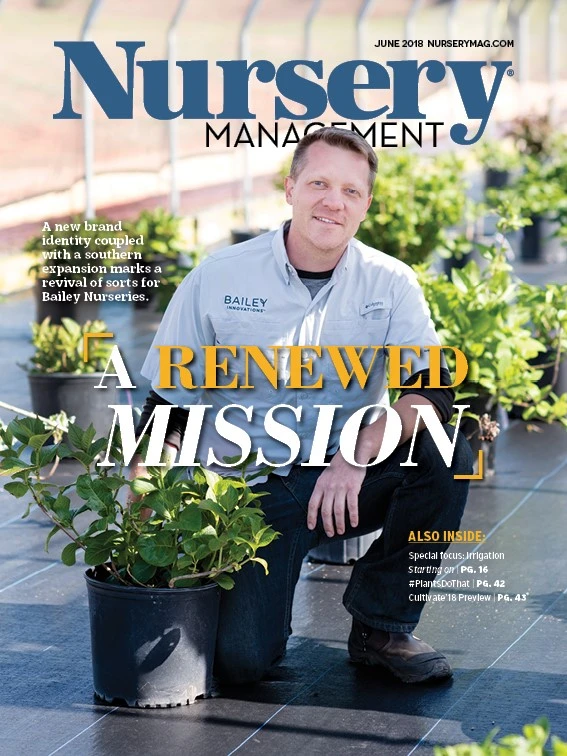
Dr. Brian E. Jackson is an associate professor and director of the Horticultural Substrates Laboratory at North Carolina State University. He has researched wood substrates since 2005, and his work specializes in the engineering, characterization, and commercialization of these materials. He will discuss the topic “Focusing on Substrates: The Wood Fiber Frenzy” at Cultivate ’18.
NM: What are some of the North American and European wood substrate products that are in vogue and what makes them different from one another?Jackson: To
Jackson: There are, as well in addition to many blenders and distributors of mixes containing the above mentioned raw wood materials. These materials are not continent specific in that the European-based companies have operations here in the U.S. who sell those mixes here, and some North American companies and products are venturing overseas in their product distribution.
NM: Are there differences among the various products?Jackson: These materials are primarily different in the feedstock used to make them, tree species for example, and the method or process by which they are made. Several different machines and processes exist that make similar and different products. Other than being 100 percent wood and un-composted they
NM: What has laboratory analysis and grower trial experience shown in regards to these products?Jackson: That they are more successful than unsuccessful when trialed in laboratory or grower operations; that they do require some production system and crop management strategy changes, depending on the grower of course; that they are stable materials for most all cropping systems evaluated; and the irrigation management may be more critical or important than fertility changes or management. NM: Are there potential long-term financial benefits of these products for growers?Jackson: This depends so much on individual growers, their location, the crops they grow, and their operating systems. If wood-based mixes, or components, can be readily obtained from sources close to growers, the savings on transportation costs may be the most immediate and long-term benefit.
NM: Do you believe even more substrates will be coming to market soon? What might they be?Jackson: Yes. The potentials and possibilities of engineering wood are just now being more fully explored and tested. One of the greatest attributes of wood is its ability, ease, and consistency of being processed and engineered to yield many very different particle sizes and shapes, all of which serve different functions and can be further formulated to fit a large variety of growing systems, containers, hydroponic gutters and troughs, bags, and such. That, coupled with the vast wood resources we have in the U.S. and the variety of equipment and processing machinery that is available to make substrate materials, makes me think the future is bright. With continued grower interest, trials, and successes there will be more products added by substrate manufacturers that perform a variety of different functions in soilless cultivation systems.
Want to go? “Focusing on Substrates: The Wood Fiber Frenzy” Saturday, July 14 | 4:00 - 5:00 p.m. Union Station A

Explore the June 2018 Issue
Check out more from this issue and find your next story to read.
Latest from Nursery Management
- John Ruter shares UGA's latest woody and herbaceous ornamental plant breeding projects
- Conor Foy joins EHR's national sales team
- Pantone announces its 2026 Color of the Year
- Syngenta granted federal registration for Trefinti nematicide/fungicide in ornamental market
- Get to know Kayela Aeppli
- HILA 2025 video highlights: John Gaydos of Proven Winners
- Q&A with Justin Bartlett
- Be the best choice





